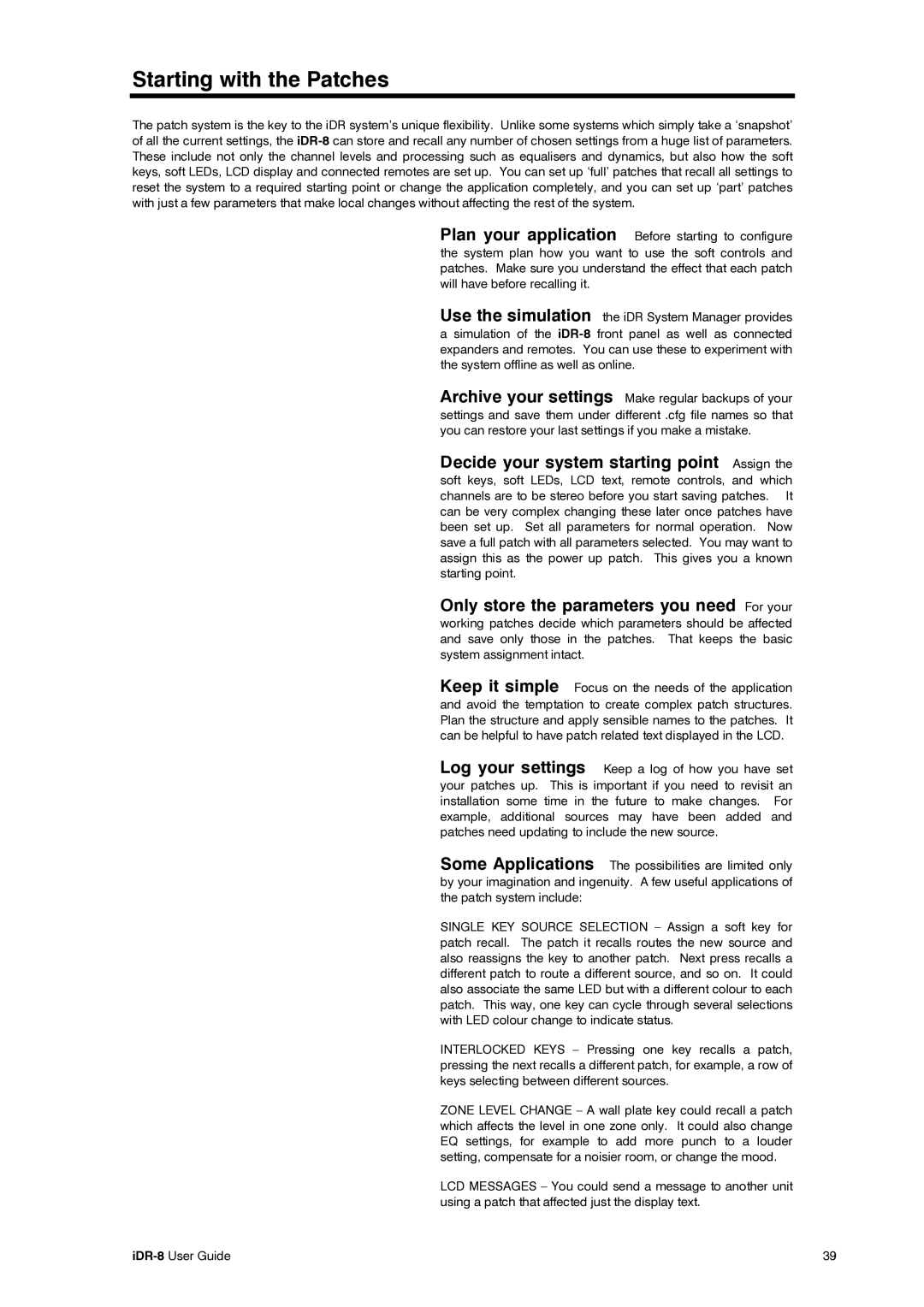
Starting with the Patches
The patch system is the key to the iDR system’s unique flexibility. Unlike some systems which simply take a ‘snapshot’ of all the current settings, the
Plan your application Before starting to configure the system plan how you want to use the soft controls and patches. Make sure you understand the effect that each patch will have before recalling it.
Use the simulation the iDR System Manager provides a simulation of the
Archive your settings Make regular backups of your settings and save them under different .cfg file names so that you can restore your last settings if you make a mistake.
Decide your system starting point Assign the
soft keys, soft LEDs, LCD text, remote controls, and which channels are to be stereo before you start saving patches. It can be very complex changing these later once patches have been set up. Set all parameters for normal operation. Now save a full patch with all parameters selected. You may want to assign this as the power up patch. This gives you a known starting point.
Only store the parameters you need For your
working patches decide which parameters should be affected and save only those in the patches. That keeps the basic system assignment intact.
Keep it simple Focus on the needs of the application and avoid the temptation to create complex patch structures. Plan the structure and apply sensible names to the patches. It can be helpful to have patch related text displayed in the LCD.
Log your settings Keep a log of how you have set your patches up. This is important if you need to revisit an installation some time in the future to make changes. For example, additional sources may have been added and patches need updating to include the new source.
Some Applications The possibilities are limited only by your imagination and ingenuity. A few useful applications of the patch system include:
SINGLE KEY SOURCE SELECTION – Assign a soft key for patch recall. The patch it recalls routes the new source and also reassigns the key to another patch. Next press recalls a different patch to route a different source, and so on. It could also associate the same LED but with a different colour to each patch. This way, one key can cycle through several selections with LED colour change to indicate status.
INTERLOCKED KEYS – Pressing one key recalls a patch, pressing the next recalls a different patch, for example, a row of keys selecting between different sources.
ZONE LEVEL CHANGE – A wall plate key could recall a patch which affects the level in one zone only. It could also change EQ settings, for example to add more punch to a louder setting, compensate for a noisier room, or change the mood.
LCD MESSAGES – You could send a message to another unit using a patch that affected just the display text.
| 39 |
